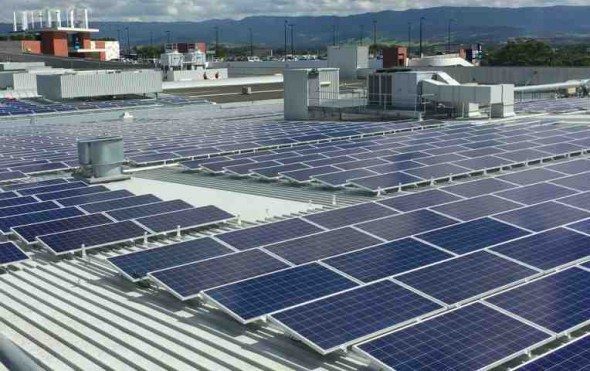The introduction of regulatory measures to reward local energy generators for their contributions to the grid could unlock savings of more than $1 billion in avoided network costs, a major Australian study has found.
The study – which was led by the University of Technology Sydney’s Institute for Sustainable Futures, and funded by ARENA – found that paying ‘local network credits’ to local generators for their role in reducing overall investment in the electricity network could reduce network expansion costs by 59 per cent, representing an overall positive economic benefit of approximately $1.2 billion by 2050.
The findings are based on the results of five virtual trials conducted by the ISF in five different locations around Queensland, New South Wales and Victoria, which modelled the benefits of local network credits and local energy trading (also known as virtual net metering).
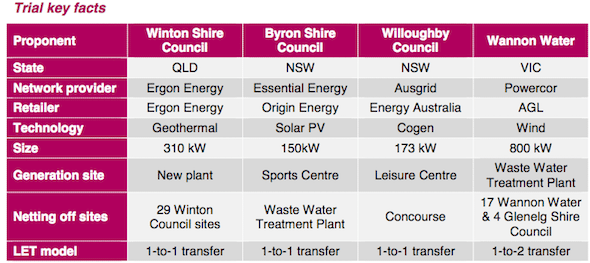
As we reported in May, early results from the modelling found that the current National Energy Market structure not only offered little financial incentive to export distributed energy generation, but created a strong incentive for customers and product developers to keep generation “behind the meter”, and a “perverse” incentive for networks to duplicate infrastructure.
The final findings, published on Tuesday, tell much the same story: “Results of four out of five virtual trials of Local Network Charges and Local Electricity Trading completed to date indicate there is potential for distributed generation to meet local consumption, which is unlikely to be realised under current market conditions,” the ISF says.
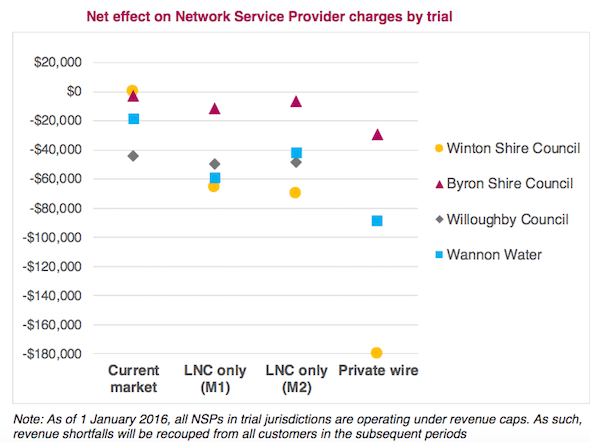
The Willoughby trial results, in particular, said the ISF, “demonstrate that even a relatively low Local Network Charge can send a meaningful signal to operate dispatchable generation when the network is most likely to need support.”
The report finds that offering a Local Network Charge for the cases investigated would keep solar and other distributed generation on the grid, “in an era of increasingly locally derived supply.”
Such an incentive would also maintain the network charges paid by the proponent, the report notes, “relative to a significant increase in behind the meter consumption using a private wire approach, even taking into account payment of the Local Network Charge itself.”
The result, it says, leaves the proponent and other customers better off, due to the fact that money is not wasted on more and more poles and wires.
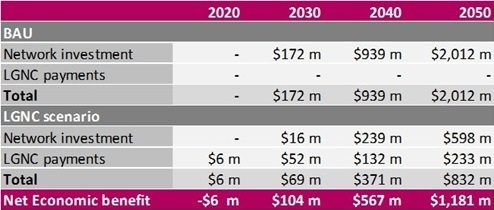
“In all cases,” the report says, “the current market scenario results in the lowest reduction in network charges, as the only change in charges is the effect of the behind the meter consumption at the local generation site.
“The private wire case results in by far the greatest loss of immediate income for the network business, even compared to the case where the network pays the higher LNC directly.
“The implication is that if customers opt to build private wires, network businesses will receive less immediate revenue than if those customers were incentivised to export to the grid through the use of a LNC.”
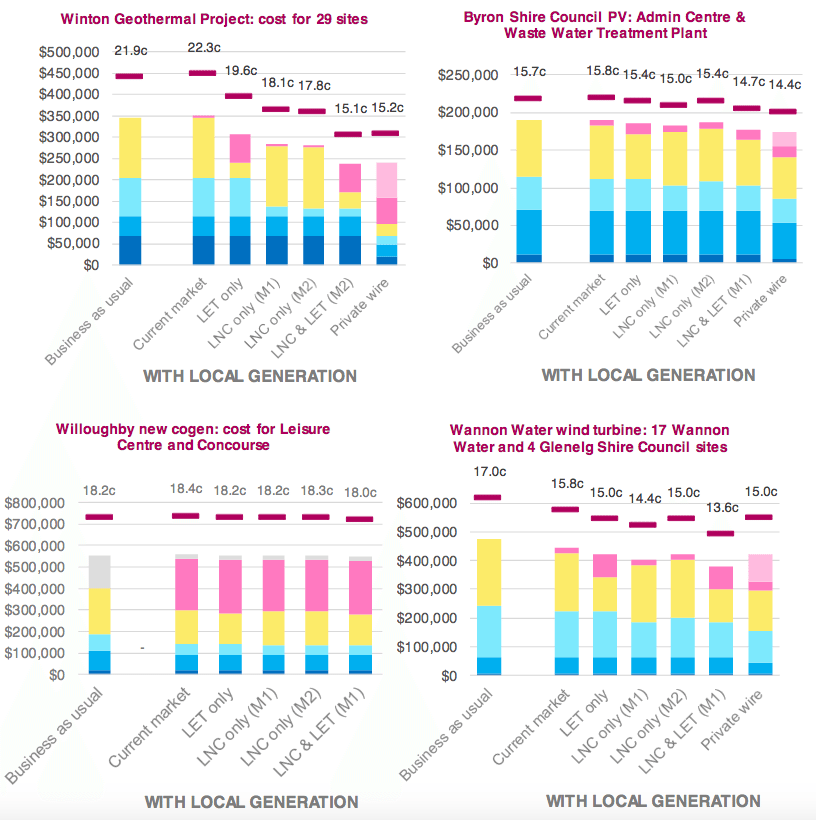

Indeed, building private wires has been the only option for community solar developers like New England Solar and Paragon Property Partners, who are co-developing a project in regional NSW that will include a purpose-built embedded network through which property owners can buy and sell the solar generated on the community’s rooftops – and stored in its batteries – peer to peer.
“The interesting bit from my perspective … is that the only reason that this kind of model is able to done in a regulatory sense is to get an exemption,” New England Solar’s Geoff Bragg told told One Step earlier this month.
“So while there’s a desire for these sorts of transactions, there’s no regulation to allow it. …It shows how slow the networks themselves are moving when everyone else is getting on with it.
“If the principal can work in a small way, then why can’t it work beyond that gateway meter?” he said. “We need a political understanding of, and support for the concerted push to get the regulators up to speed.”
On this front, all eyes are on the Australian Energy Market Commission (AEMC), which is due to reveal its decision this week on the energy market rule change that has been proposed by The Property Council, the City of Sydney and the Total Environment Centre (all backers of the ISF study), to allow for local network credits.
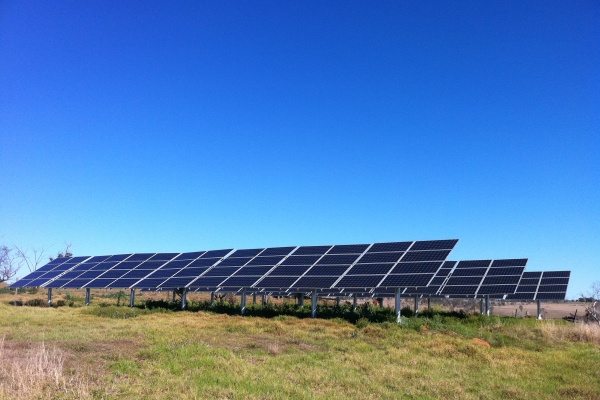
In an interview with One Step Off The Grid on Tuesday, ISF project director, Jay Rutovitz, said the Institute and its project partners were hopeful the AEMC’s decision would be a constructive one – “a step on the way to the transformation we have to have.”
“We’re expecting something from the AEMC on Thursday (and) we’re hoping for a positive result,” Rutovitz said over the phone. “At a minimum… I’m hopeful that the AEMC will put forward a discussion paper … that they will recognise there is a problem, and that we don’t have a level playing field,” she said.
At the network level, meanwhile, Rutovitz acknowledges that this is probably not the way most of the incumbents are thinking. “I think the networks are really struggling with this and dealing with a lot of change,” she said.
“It’s really important that they work towards making tariffs that work, so that we can actually get distributed energy in. What we have at the moment is a market structure that really pushes projects behind the meter. The proposed rule change is about providing an alternative to that.
“People within networks are grappling with this. And while they might not support the rule change as it stands, they do see that something needs to change.”
Rutovitz said that, while the current regulatory system was all a bit “chicken and egg”, some groups were actively working to bring about change.
Among network operators, she said, Queensland’s Ergon Energy was “leading in this space”, by trying to put a value on distributed resources and demand management.
A number of community energy groups and local councils were also doing a great job, trying to get solar gardens off the ground, she said.
AGL Energy, which has been a participant in the trials in its role as an electricity retailer is also supportive of the progress the study has made.
“The need to provide secure and cost effective energy to consumers is paramount and as our energy landscape changes, exploring new ways to supply and exchange energy are needed,” said AGL’s Stephanie Bashir
“AGL considers that projects such as this – which explore and test alternative models for network pricing and facilitating uptake of distributed energy – are of great importance when considering what regulatory and market frameworks will best support the transition to the electricity grid of the future,” she said.

